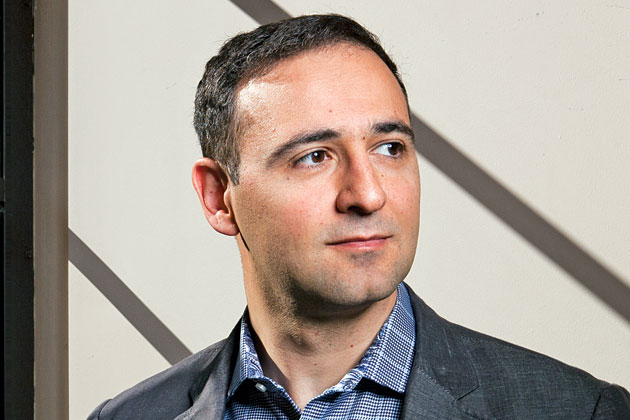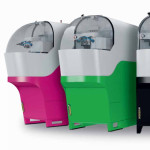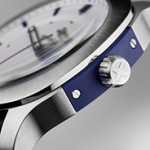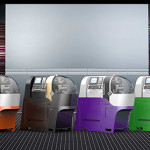Ali Hajimiri’s Chip May Allow Smartphones to See Through Objects
In the comics, Superman converts the energy from the sun’s rays into X-rays that give him the ability to see through solid objects. In a few years, a similar power may be available to anyone with a smartphone.

Ali Hajimiri, a professor of electrical engineering at the California Institute of Technology, has created a chip capable of producing terahertz waves—radiation that can penetrate materials such as plastic and wood without the side effects associated with X-rays. When connected with a computer or mobile device, the 0.1 inch-wide silicon chip could help doctors locate skin cancer noninvasively and speed up passenger scans at airport security lines.
So-called T-rays have been used mostly in experiments in medical and dental imaging. Typically, the rays are created with bulky, expensive machines, which “see” using a single large beam that can image only a narrow area. Hajimiri, working with postdoctoral researcher Kaushik Sengupta, got thousands of tiny transistors to operate in concert, producing terahertz waves from a smaller package.
“Imagine if you have an army of ants, where you can individually control what each ant does,” Hajimiri says. “It’s more versatile than an elephant. You can program them to do different things.” In his design, the transistors work in unison, increasing the chip’s range of view so it could, for example, image the contents of a cardboard box.
Hajimiri came up with the idea about four years ago, after observing that the transistors on chips were getting smaller and weaker but also extremely inexpensive to produce. “Everybody is complaining that you can’t do anything because the transistors are becoming so puny,” he says. “That’s true, but I have something that works to my advantage: I have practically an unlimited amount of transistors,” which allows the chip to produce a stronger signal that’s easier to control.
The technology has “potential opportunities in a wide range of applications,” says Jim McGregor, the founder of Tirias Research, which follows the chip industry. Installed in a smartphone, the chip could be used to quickly scan packages at a post office for security threats or to find art hidden behind the paint on the walls of historic buildings. Unlike X-rays, which have such high energy they can change the chemistry of objects they enter, T-rays are relatively harmless, Hajimiri says. The chip’s functionality comes with a price, however. If people can see through walls, McGregor warns, “there’s going to be a whole bunch of red flags thrown up by people around privacy issues.”
Hajimiri, who in 2002 also founded and subsequently sold a company that manufactures chip components, Axiom Microdevices, is in talks with several chip companies about commercializing his invention. His design is so simple that it won’t require new production facilities or techniques, he says. And if the device goes into mass production, he adds, it could cost as little as a dollar.
By: Douglas MacMillan
Source: www.businessweek.com








